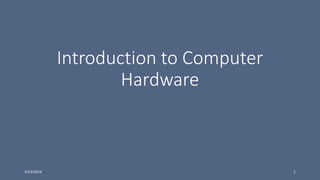This document provides an introduction to computer hardware. It discusses what a computer is and its basic components like input, output, processing and storage devices. It explains the differences between various types of computer memory like RAM, ROM, cache and primary memory. It also discusses concepts like Moore's Law and how computer performance and memory capacity have increased exponentially over time.




























































